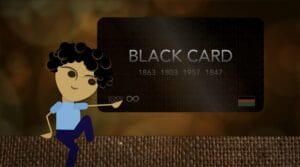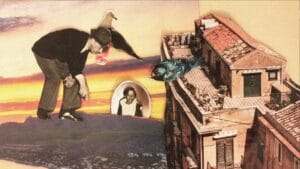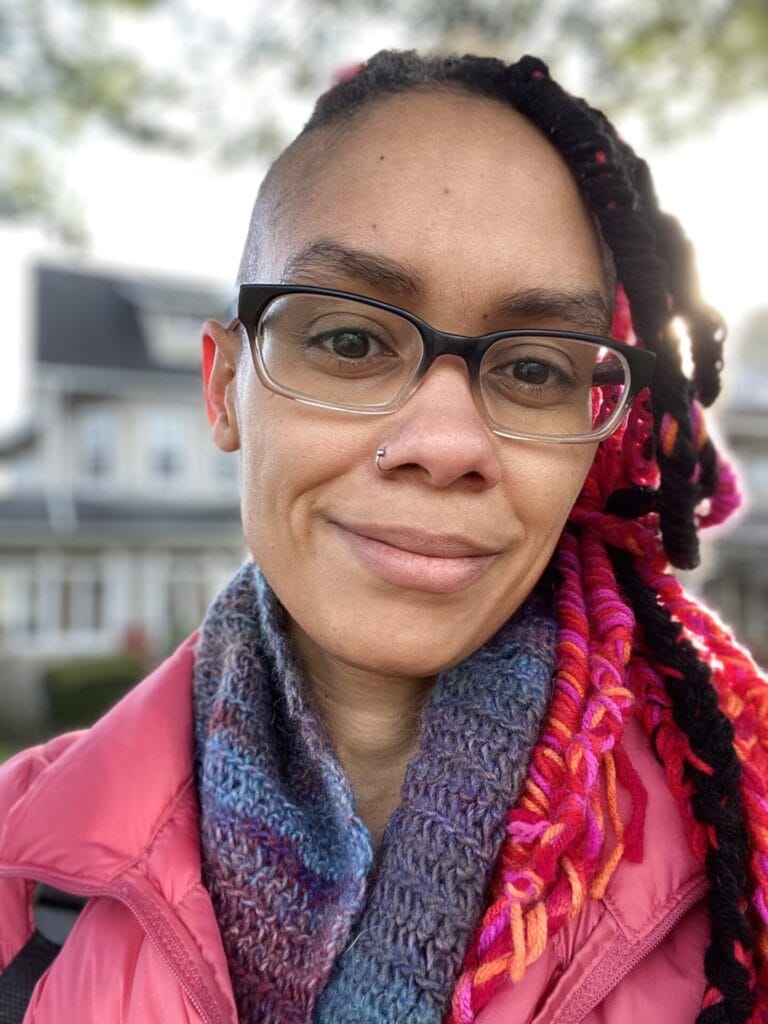Our series, “Voices of the Industry”, aims to shine a spotlight on trailblazers and changemakers within the media and entertainment world. As we continue to explore the journeys, challenges, and triumphs of queer people of color, this series has become a vital platform for amplifying voices that often go unheard. By sharing their stories, we hope to inspire and empower others within our community, highlighting the importance of representation and diversity in all facets of the media landscape.
As we move forward with “Voices of the Industry,” the significance of this work only becomes more evident. The narratives and experiences of queer people of color are too often sidelined in mainstream media, leading to a lack of visibility and understanding. This series seeks to rectify that by bringing these stories to the forefront, offering not just recognition but a celebration of the unique perspectives these individuals bring to the creative world.
For this edition, we are thrilled to feature Carrie Hawks, a multidisciplinary artist and filmmaker whose work transcends boundaries and defies categorization. Carrie’s artistic practice spans animation, illustration, and documentary film, each medium serving as a vessel for exploring complex themes of race, gender, and identity. Their work is a powerful testament to the necessity of representation, as Carrie delves deep into the intersections of their own experience as a Black, gender-nonconforming individual.
Carrie’s films, such as the acclaimed black enuf*, blend humor, personal narrative, and social commentary to challenge dominant narratives and offer new perspectives. Their artwork has been showcased in galleries and film festivals across the globe, resonating with audiences who see their own struggles and triumphs reflected in Carrie’s pieces. Through their art, Carrie not only challenges societal norms but also creates a space for healing and empowerment, making room for stories that reflect the true diversity of our world. Their dedication to elevating underrepresented voices and their ability to seamlessly blend different artistic mediums make Carrie a true visionary in the industry.
View this post on Instagram
GLAAD: Thank you so much for talking with us today, we’re obviously such big fans. Can you tell us a little bit about how your career got started? What makes you passionate about creating content and working in media, specifically with creative mediums?
Carrie Hawks: I got started making art when I was a kid from drawing and painting in art class and filling my sketchpad with images of dolls, still lifes and a Janet Jackson album cover. A teacher at my school suggested I draw more from real-life and I took a watercolor class at the Nelson-Atkins Museum in Kansas City where I’m from. I continued working in visual art and after college, I taught English in Japan. I started feeling depressed there and not making much work, then my mom reminded me that I was an artist and whatever field I worked in wouldn’t change that. So I did some comedy for the other English teachers and made a paper doll about sexual abuse and the sexualization of children, in particular girls. I went back to school for Graphic Design at Georgia State University and realized I could make animated films with After Effects. I made my first documentary, Delilah, about racial passing in my family. Media shapes how we see ourselves and others treat us. It can be damaging, or also offer alternate methods of being in the world. Seeing Ricky on the show, My So-Called Life, showed me a gay BIPOC character even when I was in high school and watching The Absolutely True Adventures of Two Girls in Love. I make art to heal myself from shame, trauma, or free myself from conforming to someone else’s ideas of who I should be. I also love documentaries for unearthing emotional and historical truths. Lately, I’ve been doing comedy and performance as an expansion of what healing can be.
View this post on Instagram
GLAAD: How do your identities, particularly being Black and LGBTQ+, influence your work and the way you navigate media and the entertainment industry as a whole? How do you feel that your work amplifies Black queer voices, visibility, and representation within the entertainment industry?
Carrie Hawks: Being Black, Trans, Non-Binary and Queer in media has led me to rich experiences when I seek out places that celebrate those aspects of identity. I started going to the BlackStar Film festival before I had made a film. Very nervous and shy, I wanted to put my body in the room with creative people in hopes that it would rub off on me. I’d attend screenings by the New Negress Film Society and push myself just to say ‘hello.’ Going to Brown Girls Doc Mafia events and joining their Facebook group (alas, so many years ago), revealed that there were so many Black filmmakers who I hadn’t been aware of. They shared knowledge, skills, and being part of that group has given me confidence to make work and continue working. Eventually getting to know some of them and becoming a filmmaking peer. Being part of the Diverse Filmmakers Alliance also helped craft my films into better ones. Finding supportive communities in media or in friendships keeps me full. Now being able to curate film programming, be on juries, and also teaching has allowed me to lift up other Black LGBTQ+ and BIPOC artists. Reading work to see how we’re portrayed and offering critique when things are off.
In my films, I center Black queer voices. My autobiographical film, black enuf*, explores being a Queer oddball seeking acceptance from Black peers despite a serious lack of Hip-Hop knowledge.
In my short, Origin of Hair, I pay homage to Sister Rosetta Tharpe, the godmother of Rock and Roll who toured the South with her girlfriend. Also my project, Inner Wound Real, relays the story of three BIPOC people who used to self-harm then find new ways to cope.
GLAAD: We’d love to know, who are the artists, creatives, or industry professionals that inspire you the most, and what is it about their work that resonates deeply with you? Is there anything you’re watching, reading, or listening to right now that informs your work and that you’d recommend?
Carrie Hawks: I’m a huge fan of JaTovia Gary’s work, she’s been doing film, installation, and even neon work. I appreciate how she goes into Toni Morrison’s literature, incorporates dance, and also culls from social media in her works. I recently saw Joséfa Ntjam’s show at Fotografiska which included installation, video, textiles and collages. One of the best exhibits I’ve seen in years. Her work built upon Sun Ra’s AfroFuturism, marine creatures, spells, and traditional sculptures. I also watched Dan O’Bannon’s Return of the Living Dead, a horror comedy from the 80s which I recommended to anyone who would listen. The new Interview with a Vampire gets me going with all the gay, dramatic, and delicious characters. For my own project, I’ve been looking into Rise St. James, an activist group fighting petrochemicals in Louisiana including leadership by Sharon Lavigne and reading The Secret Life of Bats.

GLAAD: What advice would you offer to emerging Black LGBTQ+ creatives who are striving to break out and make their mark in the industry? What key lessons have you learned that you’d like to pass on?
Carrie Hawks: Find or build a community of artists who want to see you grow. Get together and share resources, ideas, critiques, even equipment. Share your work with your friends, put yourself in a room of people you admire and soak up the energy and wisdom.

GLAAD: What do you hope for or want to see for the future of Black queer representation in media?
Carrie Hawks: I hope that more people share their stories, their insights, their special interests, and their unique perspectives. We’ll expand the idea of what Blackness and Queerness means and how we present. We’re a varied group. Also that more people in media uplift, support, and amplify Black Queer artists.
GLAAD: We’re so excited to hear about what you’re currently working on and projects that are on the horizon. What’s next and upcoming for you, and how can readers and fans keep up with you and your work?
Carrie Hawks: I’m working on a feature script about vampire snails fighting to protect their home, enlisting a cross-species brigade. Also, I’ll be doing a Remembering/Forgetting Spellcasting ceremony at Govenor’s Island as part of Flux Factory’s programming, Golden Colonel, Curated by artists Heather Kapplow and Itala Aguilera, that examines the idea of artist retirement. There is an unspoken understanding that because being an artist is not a “real” job, but something more like a calling, and because artists often don’t earn enough money to save for old age, they can’t retire. They just make art until they die. The Golden Colonel explores some of the complexities of artists considering the same choice to retire from their practices as everyone else.
_______________________________________________________________________
Be sure to follow Carrie on Instagram at @maroonhorizon, and see their groundbreaking work on their website where you can also join the mailing list
Stay tuned for more inspiring stories and insights from trailblazing LGBTQ creatives of color as the “Voices of the Industry” series grows. Join us as we continue to uplift and celebrate the diversity that enriches our media and entertainment landscape!













